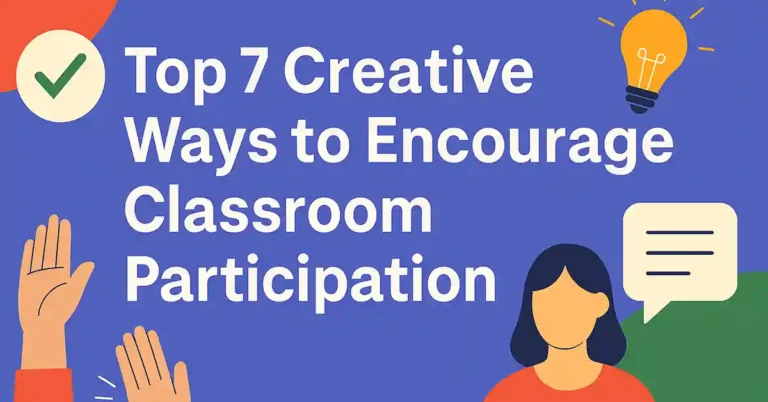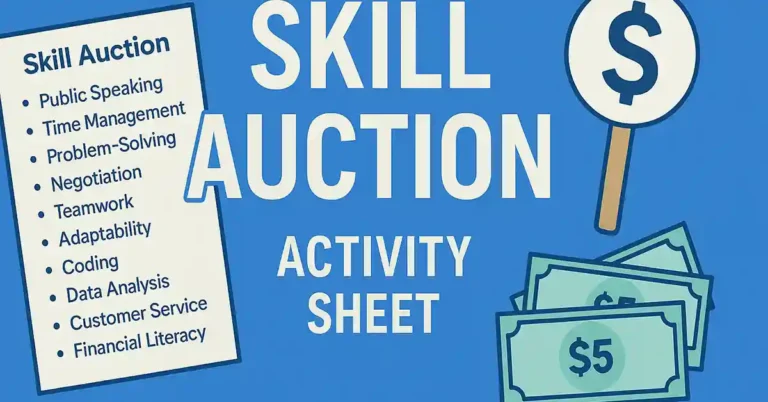Free Effective Seating Plan For the Classroom
The classroom seating chart is one of those unsung heroes of classroom management. It seems like a mundane task, but trust me, a well-thought-out seating plan can make a significant difference in the dynamics and learning environment of your classroom. It doesn’t take much time to create a great classroom arrangement. Let’s get started!
Introduction to Creating a Seating Chart
Have you ever played musical chairs? Designing a seating chart is a bit like that, minus the chaos. It’s all about strategically placing students where they can be at their best. In some situations, tailoring a classroom seating plan to student preferences is a good idea. Other times, alphabetical order is an efficient way to start the year. But, for those who are looking to maximize a given space for their teaching style, here’s what you need to keep in mind:
Know Your Students: Before arranging students’ names on a chart, get to know your students. Who works well together? Who doesn’t? Who has special needs or requirements? A bit of research and observation can go a long way! It may take a few different classroom seatings to find one that works best.
Variety is the Spice: Change it up every once in a while. Rotating seating arrangements can help middle school students interact with different peers and can prevent the monotony of sitting at the same spot every day.
Functionality: Think about the design of your classroom. Where’s the main focus? Where are the high-traffic areas? Students should be positioned so they can easily see the board, interact in groups, and get in and out without causing a traffic jam.
The Positive Impact of a Seating Plan
Here’s the fun part: the benefits!
Improved Focus: With the right seating plan, you reduce distractions and improve student learning. This can be particularly beneficial during tests or when introducing new material.
Enhanced Peer Interactions: You encourage a more inclusive environment and foster new friendships by seating students next to different classmates.
Facilitates Special Needs: A seating chart isn’t just about student behavior. It’s about catering to students with special needs or physical impairments, ensuring they have the required space and resources.
Efficient Classroom Management: With fewer disruptions, there’s a smoother flow to the lessons. This allows for more efficient use of time and a better overall teaching experience.
Who should be in the front of the room?
Now, to the front row – the VIP seats. Here’s how to decide who gets those coveted spots:
Students with Behavioral Issues: It might seem counterintuitive, but seating these students at the front can reduce disruptions. They’re closer to the teacher (hello, immediate feedback!) and less likely to be disruptive if they know they’re in the teacher’s direct line of sight. This might be a particularly handy strategy for high school students.
Students with Special Needs: Students who have visual or auditory impairments, or other identified needs, often benefit from sitting at the front. They get clearer access to the board, the teacher’s voice, and any other resources used during lessons.
Shy or Less Vocal Students: These students might not raise their hand as often in a crowded classroom, but seating them at the front can make them feel more included and might encourage participation.
Choosing Students to Sit in the Back Row
Often overlooked, the back row is not just a place for students who arrive late to class or those trying to avoid the teacher’s gaze. In fact, the back row, when used strategically, can have numerous advantages for a number of students. Here’s how to discern which students might thrive in this spot and the benefits they might reap from it:
Who Might Thrive in the Back Row?
Self-motivated Students: Students who are intrinsically motivated and can work with minimal supervision might benefit from the back row. They can work at their pace without feeling like they’re under the spotlight.
Overstimulated Students: Some students may feel overwhelmed with too much going on around them. The back row can offer a slight reprieve from the bustle of the classroom.
Older or Taller Students: In mixed-age or multi-grade classrooms, older or taller students can be seated at the back to ensure that everyone has an unobstructed view.
Students Who Need Stretching Space: Some students fidget or need to stretch often. The back row can provide them with a little extra space without disturbing others.
Where to Put the Teacher’s Desk
Choosing the right spot for the teacher’s desk is more strategic than one might think. Here’s why its placement matters and a few suggestions:
Visibility: Your desk should be placed where you have a clear line of sight to all student desks. This not only allows you to monitor student activity but can also deter off-task behavior.
Accessibility: Students should feel comfortable approaching you, so don’t tuck your desk away in a remote corner. Instead, have it near a central spot but not necessarily at the very front. This creates an atmosphere of openness.
Utility: Ensure your desk is near essential resources like the computer, projector, or other teaching aids. This helps in seamless transitions during lessons.
Minimize Distractions: While accessibility is crucial, placing your desk right next to high-traffic areas like the door can lead to frequent disruptions.
How the Classroom Layout Can Have a Positive Impact
The classroom’s physical layout is like the stage for a play, setting the scene for the educational dramas and triumphs that will unfold.
Encourages Participation: A U-shaped or semi-circle arrangement, for example, ensures every student is facing the center, making it easier for discussions and debates.
Promotes Safety: Clear pathways reduce the risk of trips and falls, while a well-spaced layout can help in emergency evacuations.
Boosts Student Engagement: A classroom that allows students to comfortably see, hear, and participate can lead to increased student involvement and understanding.
Flexibility: Classrooms that can easily be rearranged mean that different teaching styles and activities can be accommodated.
Ways to Tweak the Classroom for Small Groups or Individual Work
Adapting the classroom layout to the nature of the task can enhance students’ learning experience. Here’s how:
Cluster Desks for Group Work: Table groups promote collaboration. Ensure each small group of students has enough space to spread out their materials and discuss without overly disturbing other groups.
Quiet Corners for Individual Work: Set aside a few spots in the room that are away from the main action, where students can work independently without distractions.
Use of Classroom Corners: Corners can be turned into ‘workstations’ or ‘activity zones.’ This works great for rotational activities, where students switch stations after completing tasks.
Portable Dividers: If you have them, use portable dividers or screens to section off parts and create a new floor plan. These can be particularly useful during tests or quiet reading times.
Flexible Seating: Consider incorporating flexible seating options like bean bags, cushions, or movable chairs. They can be reconfigured based on the activity, allowing students to choose where they feel most comfortable.
In conclusion, while the content and teaching methodologies are integral to education, the physical layout of the classroom plays a pivotal role in setting the stage for successful learning. Being intentional about the best seating arrangement, the placement of the teacher’s desk, and the flexibility of the space can make a world of difference in the students’ experience in all subject areas.
Downloadable Class Seating Charts
Individual Seating Plan
Group Seating Plan A
Group Seating Plan B
Partnered Seating Plan







